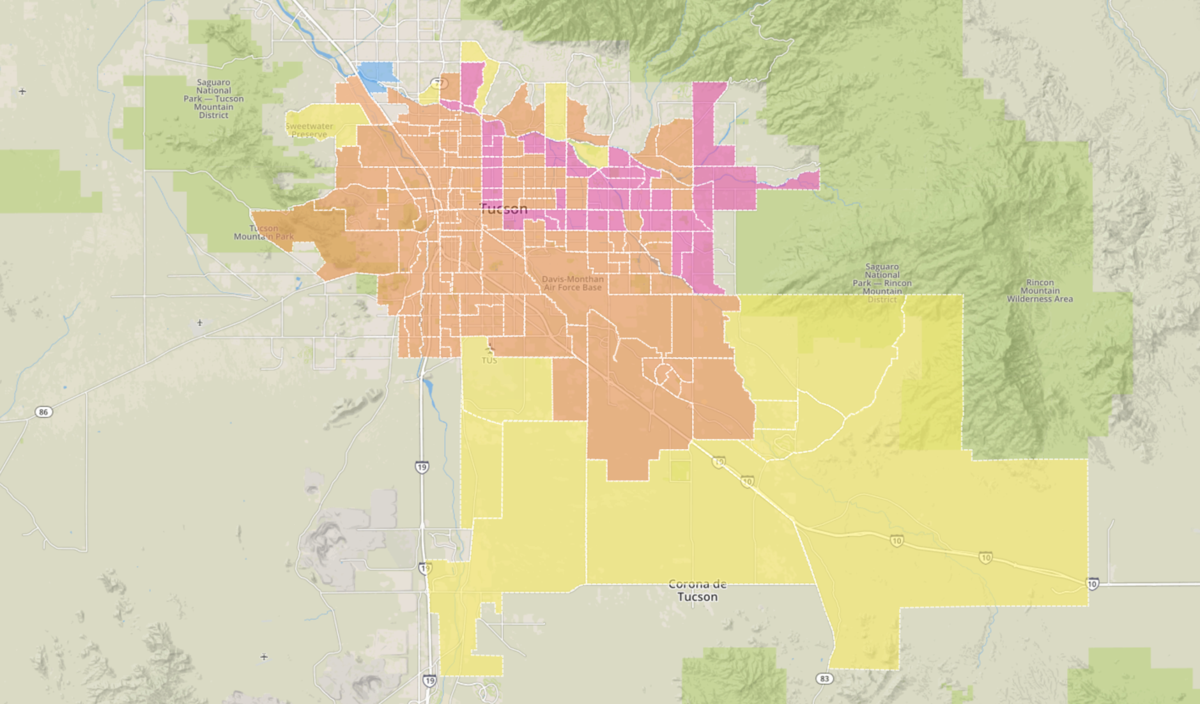City Councilwoman Regina Romero dominated the electoral map of Tucson in the three-way Democratic primary for mayor last week.
While she won the most votes by a wide margin, an analysis of official election results by the Arizona Daily Star shows she took an even higher percentage of voter precincts throughout the city.
Half the vote went to Romero, along with over 70% of precincts where voters cast ballots.
Her nearest competitor, former state Sen. Steve Farley, took less than 30% of these precincts.
Developer Randi Dorman lost all of them.
Farley’s precinct victories were largely limited to northeast Tucson. Most of them were along the edge of the city, branching out from the Rillito River and Pantano Wash, east of First Avenue and River Road and north of 22nd Street.
He also won along Tucson Boulevard and Broadway, stretching north and east from Reid Park.
Romero and Farley tied with 11 votes in one precinct at the northwest corner of the map.
Precincts Farley won overlapped many of the neighborhoods with the highest white populations in the city.
While Romero also won in some of these areas, she took a more diverse selection of Tucson. She won all neighborhoods with the highest Latino populations and most neighborhoods with the highest black populations.
She also won more precincts than Farley in his old Legislative District 9, although Farley totaled more votes there. Only a portion of his former constituents could vote in the race as much of the district covers unincorporated Pima County.
Romero won all precincts within her City Council ward.
No one voted in 13 precincts for mayor in the Democratic primary. Most of these precincts are split between Pima County and the city, which explains why no one voted in these areas, said Assistant City Clerk Suzanne Mesich. “The area inside the city usually contains only businesses along a major street.”
She noted that other voter precincts with zero turnout are largely vacant land near Rita Ranch and the airport.
Turnout was low among citizens of voting age, even when accounting for vacant land. Only 16% participated in any of the primary elections on Aug. 27. About 24% of registered voters cast ballots.
Voter turnout is low across the country in elections for mayor, according to a 2016 study by researchers at the University of Portland. Fewer than 15% of voting-age citizens participated in elections in 10 of the 30 largest cities in the county, according to the study.
Romero will run against independent Ed Ackerley and Green candidate Mike Cease in the November general election. Cease received enough write-in ballots in the primary to qualify.
No Republican candidates collected enough signatures to appear on the ballot.
The Arizona Daily Star analyzed the Census Bureau’s most current city-wide and tract-level demographic data from 2017 for this report.





